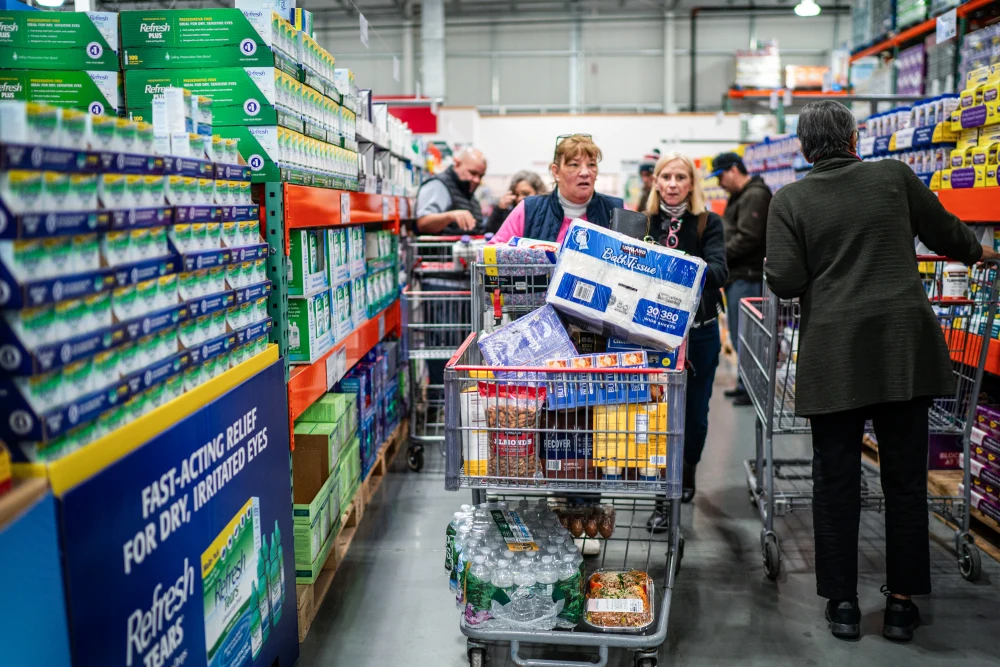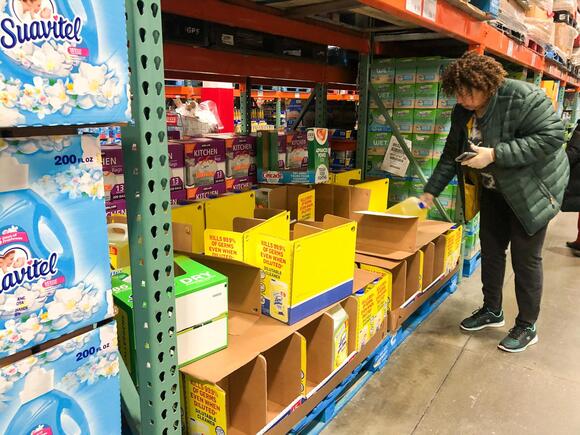Retailers Warn of Potential Shortages as China Tariffs Disrupt Supply Chains
Retailers are raising alarms that U.S. consumers could once again see empty shelves and renewed supply chain chaos—similar to the disruptions of the Covid era—if President Donald Trump’s tariffs on Chinese imports remain unchanged.
Following the administration’s recent move to impose a 145% tariff on nearly all goods coming from China, many companies have begun canceling shipments and pausing new orders. As a result, freight traffic into the U.S. is already showing signs of slowing down. Ship tracking data from Port Optimizer reveals that container ship arrivals at the Port of Los Angeles are projected to fall 33% year-over-year for the week ending May 10.
Normally, this time of year marks a ramp-up in imports as retailers prepare for two crucial sales periods: back-to-school and the winter holidays. The sudden pullback in orders is fueling uncertainty over whether retailers will be able to stock shelves with the variety and quantity of goods that U.S. consumers expect.
“Retailers are making their holiday buying decisions now,” said Jonathan Gold, Vice President of Supply Chain and Customs Policy at the National Retail Federation. “With so much uncertainty surrounding tariffs, it’s a major challenge for companies to know how to plan orders and pricing.”
Under the current tariff structure, importing a $100 product from China—excluding certain categories like electronics and pharmaceuticals—now costs at least $145 in fees, essentially doubling the product’s price before it hits shelves. For many U.S. businesses, this eliminates any profit margin, forcing tough decisions: sell at a loss or hike prices beyond what many consumers are willing to pay.
Chinese suppliers told NBC News that major U.S. retailers, including Target, have halted new orders. One vendor who exports press-on nails said her products are ready to ship but have been stuck in China for weeks. She doesn’t anticipate any shipments making it to the U.S. in the first half of the year.
If the tariffs remain in place, the National Retail Federation expects U.S. imports to fall by as much as 20% in the second half of 2025.
Among the goods most at risk of disappearing from store shelves are affordable items like footwear, clothing, toys, and consumer electronics—all of which are primarily manufactured in China, Gold noted. Perishable imports such as apple juice and seafood are even more vulnerable, as they cannot be stockpiled for long periods due to limited shelf life.
“We’re going to start seeing shortages like we did during Covid,” said Sean Stein, President of the U.S.-China Business Council. “Toilet paper was just the beginning back then. Now it could be a wide range of everyday items. If the administration waits to act until shelves are empty and panic buying sets in, it’ll be far too late.”
According to sources familiar with lobbying efforts, the growing risk of widespread product shortages has begun to catch the White House’s attention—perhaps more so than the steady stream of corporate complaints about rising costs. Officials within the Trump administration are reportedly most concerned about the optics of shortages around high-profile holidays such as Independence Day and Christmas.

Tariff Uncertainty Rattles Retailers and Small Businesses as Supply Chain Disruptions Mount
Following a meeting with top U.S. retailers this week, former President Donald Trump said Wednesday he was weighing a potential reduction in tariffs on Chinese goods—though no official move has been made. On Thursday, Trump claimed that his administration had engaged in talks with Chinese officials. However, earlier that day, Chinese authorities denied any formal trade discussions had taken place.
In anticipation of the tariffs, some larger retailers had rushed to front-load shipments from China, buying themselves a cushion to get through the summer. But for smaller companies, that kind of strategy wasn’t feasible. Many lacked the financial resources or manufacturing clout to scale up production. Jessica Berger, founder and CEO of pet brand Bundle x Joy, wasn’t able to intercept her latest shipment of pet toys and accessories before the steep 145% tariffs went into effect.
Now, she’s facing a hefty $180,000 tariff bill when her goods land at U.S. ports. Berger said her company—buoyed by revenue from its U.S.-made pet foods—can manage the cost through current financing, but she acknowledged that not every small business is in the same position.
“I’m fortunate to have the resources now, but six months ago, this could’ve put me out of business,” Berger said. “Cash is that tight when you’re small. We don’t have big credit lines or multiple funding channels.”
With the vast majority of dog toys manufactured in China, Berger doesn’t see a viable alternative for production. Looking ahead to the holiday season, she said she’ll need to raise prices on future product lines to absorb the cost of tariffs—if they remain in place. She’s also hearing from peers in the small business community who are beginning to pull back on their production in China entirely.
“I think we’re headed toward a limited supply of nonessential goods,” she said. “Consumers may buy less simply because fewer products will be available—and when they are, they’ll cost more.”
For importers who can’t or won’t pay the tariffs, the impact could be immediate: thousands of shipping containers could go unclaimed at U.S. ports, clogging the system in scenes reminiscent of early pandemic chaos, according to Sean Stein, president of the U.S.-China Business Council.
“We’re looking at a backlog of containers that could jam up the ports,” Stein warned. “It’s shaping up to be a logistics nightmare.” Even if Trump moves to cut tariffs, the damage to the supply chain would likely take weeks or even months to unwind due to the time it takes for ocean freight to reach the U.S. and for domestic logistics to adjust.
“There’s an eight-week window where volume is going to plummet before it can rebound—assuming everything returns to normal,” said Dean Croke, principal analyst at DAT Freight and Analytics. “And this is all happening at a time when shipping activity should be rising.”
The downturn in port traffic is expected to ripple through the broader transportation network. Trucking firms that typically pick up goods at the port will begin seeking freight elsewhere, flooding the market with unused capacity and pushing down the rates truckers are paid. That drop, coupled with slowdowns in sectors like construction and manufacturing, could drive truck drivers out of the industry—worsening a driver shortage later in the year.
“Even if everything normalized today, it might be well into the second half of the year before trucking volumes start to recover,” Croke said.

